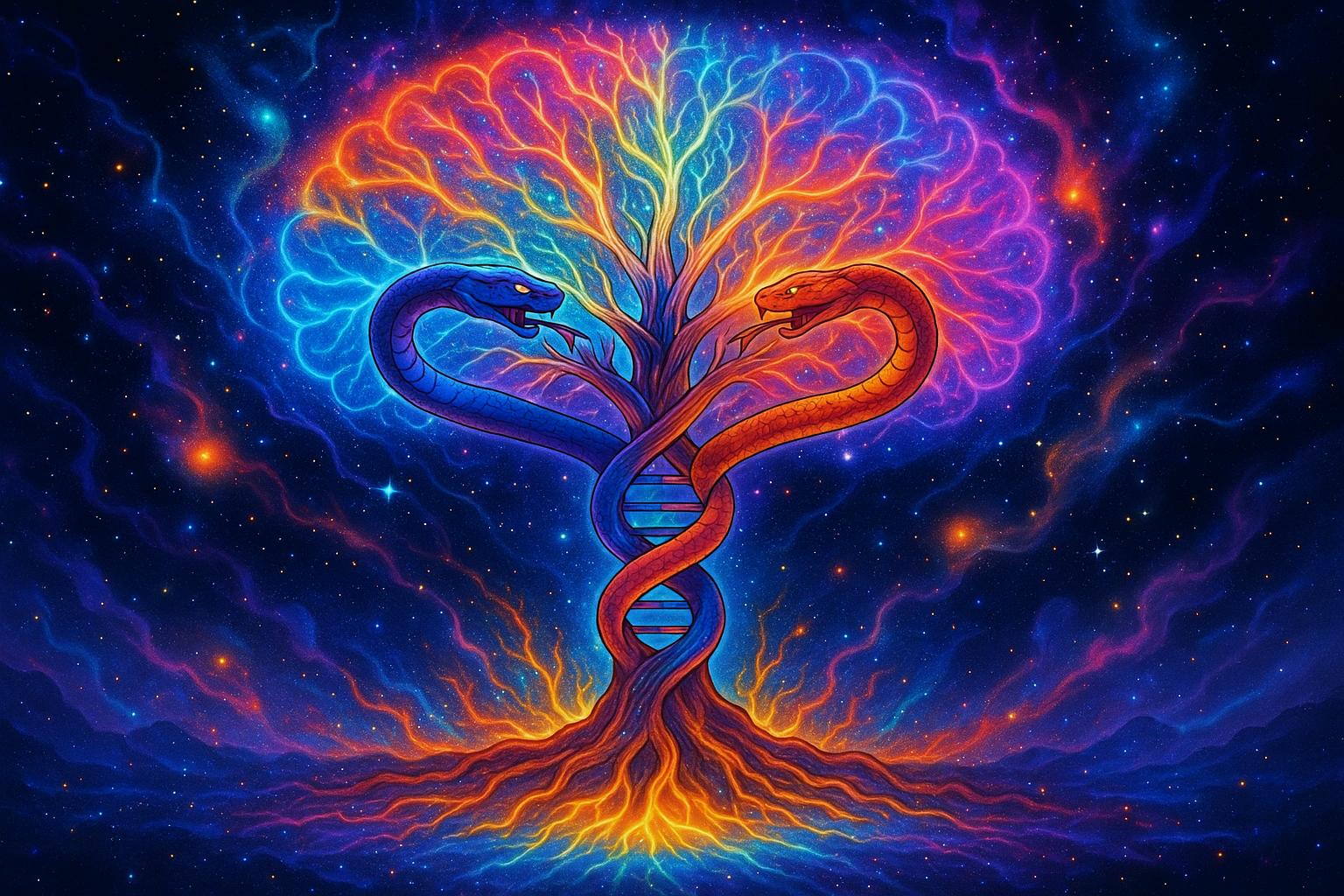Minxuan Zhao, an innovative artist and designer, has carved a distinctive niche at the intersection of consciousness and creativity. As the founder of Lesley Studio, Zhao refers to herself as the “Fourfold Integrator of Consciousness.” Her artworks are not mere creations; they emerge from profound experiences during lucid dreams, meditative states, and altered consciousness. This process allows her to compose a non-verbal subconscious archive that encapsulates complex themes such as emotion, fragmentation, and time perception.
Zhao's unique aesthetic invites comparisons to what some have termed "Neuralink aesthetics," a fusion of consciousness with technology. She recounts her spiritual journey intimately, stating, “I personally went through the process of individuation that Jung himself experienced, and I also entered the part he feared—the realm of the superconscious he wrote about.” This connection to Jungian philosophy deeply underpins her work, merging psychological theory with artistic expression.
Her artistic journey began in her high school years in the UK, where she had a transformative encounter with Picasso’s "Woman in the Mirror." This critical moment sparked her passion for art and provided her with foundational lessons in composition and colour dynamics. Reflecting on her path, she admits that her struggles with personal expression led her to distance herself from painting for nearly a decade. “What I loved, has returned,” she recalls, highlighting the deep emotional connection she feels between her artistry and her personal growth.
Zhao’s more recent works, such as "The Shape of Forever" and "The All," serve as what she calls "Threshold Guardians." These pieces draw upon both personal and universal themes, merging feminine generative forces with the archetypal energies described in Jungian theory. The use of colour in these paintings is particularly significant; it aligns with Jung’s cognitive functions of thinking, feeling, sensation, and intuition, while the accompanying visual elements symbolically represent collective unconscious archetypes.
Her artistic philosophy is further represented in pieces like a cosmic tree—a symbol of interconnectedness whose design echoes ancient Eastern traditions—showing her willingness to blend various cultural and psychological perspectives. The tree, with its DNA-like spirals and dual-serpent branches, embodies the continuous flow of life energy as it intertwines with the very essence of creativity.
Zhao is not only creating art; she is also reshaping the narratives surrounding motherhood and trauma. One of her poignant pieces co-created with her daughter, YiYi, stands as a testament to healing and connection, symbolising the regenerative forces inherent in motherhood. Here, Zhao’s brush captures the tumultuous reality of cultural and personal narratives, playing with component elements that reflect the complexity of identity formation.
Additionally, in "The Signal of Wings," Zhao encapsulates a state of consciousness that flows through the body, exploring ancestral memory and universal rhythm. She describes her artistic process as one of receptivity: “Each mark is not constructed but received,” suggesting a profound connection between her inner psyche and the broader cosmic rhythms.
Currently preparing for her solo exhibition, Zhao remains committed to collaboration with entities that promote transdisciplinary expression in art. She expresses a desire to integrate her experiences with avant-garde technology, seeing her work as an exploration for future collaborations with research initiatives like xAI, Neuralink, and the MIT Media Lab. “I am willing to serve as an early individual sample for an ‘AI soul model’,” she asserts, positioning her art as a bridge to the burgeoning dialogue between technology and the essence of human experience.
Zhao's perspective and practice resonate deeply with contemporary dialogues around lucid dreaming, creativity, and psychological inquiry. These themes echo in a growing interest within the art world, wherein technological advances are increasingly harnessed to explore consciousness and dream states. As startups and academic initiatives vie to understand and even manipulate lucid dreaming, Zhao’s insights appear particularly prescient, making her work not only relevant but vital to ongoing discussions in both artistic and scientific communities.
In weaving her life experiences into her art, Zhao aims for her audience to reclaim the fragments of their consciousness often lost in the chaos of modern existence. “I want viewers to see in my work the forgotten fragments of themselves,” she shares, stressing the healing potential inherent in art as a medium of self-discovery and connection.
Reference Map:
- Paragraph 1 – [1], [2]
- Paragraph 2 – [1], [2]
- Paragraph 3 – [1], [2]
- Paragraph 4 – [2]
- Paragraph 5 – [1]
- Paragraph 6 – [1], [6]
- Paragraph 7 – [1], [5]
- Paragraph 8 – [1], [3]
- Paragraph 9 – [1], [7]
Source: Noah Wire Services
